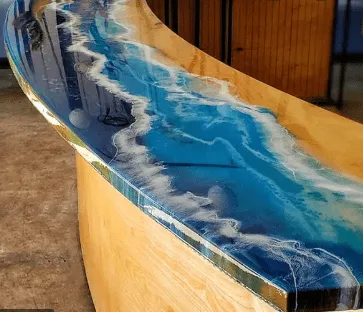What are Resin and Diecast?
The world of model collecting and enthusiast hobbies often comes down to a pivotal question resin vs. diecast. Both resin and diecast models represent different approaches to crafting miniature replicas, each with its own set of characteristics, advantages, and disadvantages. Understanding these differences is crucial for collectors, hobbyists, and anyone looking to appreciate the nuances of these finely crafted objects. Before delving into the specifics, it’s essential to clarify what each term means and what kind of model each one makes. Resin models are typically made from a synthetic plastic polymer, often referred to simply as ‘resin’. This material is poured into molds and allowed to cure, resulting in a solid, detailed replica. On the other hand, diecast models are created using molten metal, usually zinc alloy, which is injected into molds under high pressure. The resulting models are known for their weight and durability, which can give a feel that is far superior.
Manufacturing Process Resin vs. Diecast
The manufacturing process is a key differentiator between resin and diecast models, significantly impacting their final appearance and structural integrity. Resin models often utilize a simpler, more flexible molding process. Liquid resin is carefully poured into molds, often made of silicone or other flexible materials. This allows for intricate details and complex shapes that might be challenging to achieve with other methods. The resin cures, solidifying into the model. The process is usually less expensive than diecast manufacturing, allowing for lower production runs and greater variety in model subjects. Diecast models involve a more complex and high-tech process. Molten metal is injected into steel molds under high pressure. The pressure forces the metal into every detail of the mold, which allows for precision and durability. The steel molds themselves are expensive to produce, and the process is suitable for mass production to justify the cost. This results in models that feel heavier and more robust.
Material Composition

The material composition of resin and diecast models significantly influences their physical properties and the overall collecting experience. Resin models are typically made from a variety of synthetic plastic polymers. These resins can be molded into incredibly fine details, making them ideal for complex designs and intricate features. The flexibility of resin allows manufacturers to create realistic shapes and surface finishes. However, resin is generally less durable and more susceptible to damage from impacts or changes in temperature. Diecast models are usually made from a zinc alloy, a mixture of zinc, aluminum, magnesium, and copper. This composition gives the models weight and a solid feel, enhancing their perceived quality. Diecast models are inherently more robust than resin models and can withstand handling and play. The metal construction allows for greater resistance to warping or degradation over time, making them an excellent option for long-term collecting. This difference in material composition is one of the most fundamental differences between resin vs diecast models.
Durability and Weight Differences
Durability and weight are two critical aspects that differentiate resin and diecast models, affecting both their physical handling and longevity. Diecast models, owing to their metal construction, are substantially more durable than resin models. The metal alloy used in diecast models provides a robust structure that can withstand significant impacts and handling. This makes them a better option for those who enjoy displaying and interacting with their models regularly. The added weight of diecast models contributes to a premium feel, enhancing the overall experience for collectors. Resin models, while capable of capturing intricate details, are more fragile. They are susceptible to chipping, cracking, and other forms of damage, especially from accidental drops or impacts. While resin models are generally lighter than diecast, this is not a direct advantage. Resin’s lighter weight can be a disadvantage as it makes the model feel less substantial and less premium. The difference in durability is a significant factor when considering the lifespan and value of the model.
Detail and Accuracy
The level of detail and accuracy achievable in resin and diecast models is a key factor for collectors who value realism. Resin models often excel in capturing intricate details. The molding process for resin allows for the creation of fine lines, subtle curves, and complex features, resulting in a high degree of accuracy. Resin models can reproduce complex designs with exceptional precision, making them a favorite among collectors who prioritize visual fidelity. Diecast models, while typically not as detailed as resin models, have improved significantly. The high-pressure molding techniques used in diecast manufacturing can reproduce a considerable amount of detail. The use of metal components also allows for better replication of certain elements, such as grilles and trim. While resin often offers a slight edge in detail, the quality of diecast models has steadily improved, providing collectors with impressive realism and accuracy.
Cost and Availability

Cost and availability are also essential factors to consider when choosing between resin and diecast models. Resin models often come with a higher price tag due to the complexities of the production process and the specialized techniques involved. Resin models are sometimes produced in limited quantities, which can increase their value among collectors. The cost of resin models reflects their high level of detail and craftsmanship. Diecast models are typically more affordable than resin models, particularly for mass-produced items. The manufacturing process for diecast models is suitable for large-scale production, allowing manufacturers to offer models at more competitive prices. Diecast models are generally more widely available in various retail channels and online platforms. This accessibility makes diecast models an excellent option for those new to collecting or those seeking a diverse collection without high initial investment. Both resin and diecast have their pros and cons regarding cost and availability, impacting the overall value proposition for collectors.
Which is Better Resin or Diecast?
Choosing between resin and diecast models depends entirely on individual preferences and priorities. If detail and accuracy are most important, then resin models might be the better choice. Resin models offer intricate detailing. If durability, weight, and a more robust feel are preferred, then diecast models would be more suitable. Diecast models are usually more affordable and more widely available, making them an excellent starting point for beginners or those looking for a diverse collection. The best option is the one that aligns with individual collecting goals, budget, and the desired level of interaction with the models. Many collectors enjoy both types, appreciating the unique qualities each offers. Ultimately, both resin and diecast models are valuable for the hobby of collecting and appreciating finely crafted miniature replicas.
